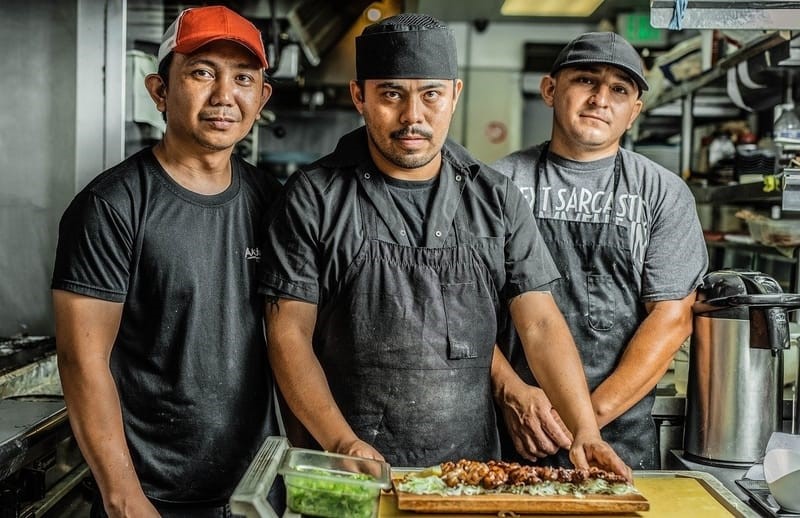Kitchens and food production facility managers perform an essential role in monitoring employee health and hygiene. Making sure staff stay home when they’re sick, wash their hands regularly and adhere to all personal health rules are important, but oftentimes the rules behind hair coverings can be lax, overlooked or misunderstood. In order to properly provide food safety training in your establishment concerning hair coverings, we’d like to provide a precise breakdown of the Minnesota food code regulations on the subject.

Proper Food Safety Training for Wearing Hair Coverings in the Kitchen
According to the food code, any employee working in a food production establishment must wear a hair restraint that prevents hair from coming into contact with food product. Allowed hair restraints include:
- Hair nets
- Hats
- Beard and moustache nets
- Clothing that covers body hair
While hair nets are acceptable, hats have become a very popular head covering in the food industry. Paper chef hats, linen baker’s hats and baseball caps are all acceptable types of head coverings to restrain hair. Chef and baker’s caps can add a touch of class or professionalism if members of your kitchen staff can be seen by guests, and baseball caps can be comfortable and embroidered with your business’s logo to give some uniformity to your team. In your establishment’s food safety training, make sure that you note that employees with longer hair should style their hair in a way to be completely restrained by their hair covering. Sometimes simply wearing a hat is not quite enough to prevent hair from touching food product or preparation surfaces.
As you can see by our list, food safety training for hair restraints includes much more than just the top of the head. If you have employees who sport facial hair, they should wear a specially designed hair net that restrains facial hair. You should also ensure that employees wear appropriate clothing to cover body hair. Make sure that there are no open shirts or tank tops worn in the kitchen that could expose body hair.
There are a few situations in which hair coverings are not required. Many service staff are exempt from this rule. Waitstaff, hosts and hostesses, bussers and counter attendants who only serve beverages or prepackaged items do not have to don head coverings.
Finally, we’ve been asked from time to time whether bald kitchen workers require a head covering. For consistancy in your food safety training policy, we recommend that all personnel in the kitchen abide by the head covering rule even those who shave their head.
Does your establishment’s food safety training have a uniform head covering rule in place at your business?
